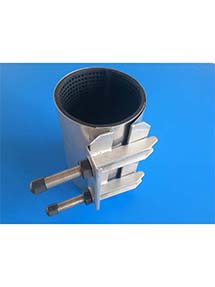Flexible Bollard Solutions for Enhanced Safety and Traffic Management
The Rise of Movable Bollards in Urban Infrastructure
In recent years, urban environments have undergone significant transformations to accommodate increasing vehicular traffic and ensure pedestrian safety. Among the innovative solutions emerging in this context is the implementation of movable bollards. Unlike traditional fixed bollards, movable bollards offer enhanced flexibility and adaptability, making them a vital component of modern urban infrastructure.
Movable bollards serve multiple functions, ranging from traffic management to security enhancement. Traditionally, bollards were used primarily as physical barriers to prevent unauthorized vehicle access to pedestrian areas or sensitive zones. However, the introduction of movable bollards has expanded their utility, allowing cities to dynamically manage traffic flows based on real-time needs. These bollards can be raised or lowered remotely or manually, providing city planners with the ability to adapt public spaces as required.
One of the most significant advantages of movable bollards is their role in improving pedestrian safety. In busy urban areas, the risk of vehicular accidents increases with crowds of pedestrians. Movable bollards can create temporary pedestrian-only zones during peak hours or special events, effectively enhancing safety and creating a more enjoyable environment for those on foot. For instance, during festivals, outdoor markets, or parades, cities can quickly deploy these bollards to restrict vehicle access, allowing people to navigate freely without the worry of incoming traffic.
Moreover, the adaptability of movable bollards also plays a crucial role in urban security. Cities face myriad challenges, including the threat of vehicular terrorism, where vehicles are used as weapons against crowded public spaces. Movable bollards can be deployed as robust barriers to protect high-footfall areas, such as shopping districts, government buildings, and major event venues. Their ability to quickly rise and lower means that cities can respond effectively to security threats, adjusting accessibility based on the level of risk.
movable bollard

When considering the design and implementation of movable bollards, aesthetics is also an important factor. Urban planners aim to create visually appealing environments, and the integration of sleek, well-designed movable bollards can complement the architectural landscape of a city. Available in various styles, colors, and materials, these bollards can blend seamlessly into the urban fabric while serving their functional purposes. This synergetic design approach ensures that safety measures do not compromise the elegance or appeal of public spaces.
The technology behind movable bollards is continually advancing, offering cities even more capabilities. Many modern systems incorporate smart technology, allowing for remote control and automation. Integrating with traffic management systems, movable bollards can respond to real-time traffic conditions, ensuring efficient flow while safeguarding pedestrians. For example, during rush hours, these bollards can be programmed to create dedicated bus lanes or bicycle paths, promoting sustainable transport modes while keeping pedestrians safe.
Furthermore, sustainability is an increasingly vital component of urban planning. Movable bollards can be powered by solar energy or other renewable sources, reducing the energy footprint of urban infrastructure. By leveraging sustainability in their design, cities can promote an environmentally friendly approach to managing urban spaces, aligning with broader goals of reducing emissions and enhancing the quality of urban life.
In conclusion, movable bollards represent a significant evolution in urban infrastructure, offering flexibility, safety, and aesthetic appeal. As cities continue to grapple with challenges related to traffic management, pedestrian safety, and security, the importance of incorporating innovative solutions like movable bollards cannot be overstated. By adopting these dynamic barriers, municipalities can create safer, more adaptable urban spaces that respond effectively to the needs of their citizens. As cities evolve, the implementation and advancement of movable bollards will undoubtedly play a crucial role in shaping the future of urban mobility, security, and public safety. The integration of such technologies exemplifies the commitment of cities to innovation and the well-being of their communities.
-
The Smarter Choice for Pedestrian AreasNewsJun.30,2025
-
The Gold Standard in Round Drain CoversNewsJun.30,2025
-
The Gold Standard in Manhole Cover SystemsNewsJun.30,2025
-
Superior Drainage Solutions with Premium Gully GratesNewsJun.30,2025
-
Superior Drainage Solutions for Global InfrastructureNewsJun.30,2025
-
Square Manhole Solutions for Modern InfrastructureNewsJun.30,2025
-
Premium Manhole Covers for Modern InfrastructureNewsJun.30,2025
